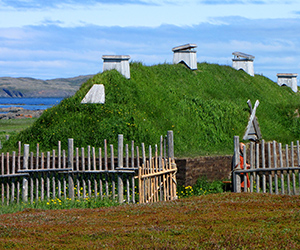CANADA HISTORY
Kirke takes Quebec

The early years of French rule in Quebec were fraught with adversity, and one of the most significant setbacks occurred in 1629 when Samuel de Champlain, the founder of Quebec, was forced to surrender the settlement to British privateers. This event, often overshadowed by later conflicts between France and Britain in North America, had a profound impact on the early development of New France and marked a critical moment in Canadian history.
The roots of this event lay in the broader geopolitical struggle between France and Britain for control of the New World. Both nations were vying for dominance in North America, seeing the continent’s vast natural resources as crucial to their imperial ambitions. For France, Quebec was a key foothold, established by Champlain in 1608 as the center of the French fur trade and the gateway to inland North America via the St. Lawrence River. The fledgling colony, however, was vulnerable in its early years, dependent on supplies from France and plagued by limited resources, harsh winters, and ongoing conflicts with Indigenous peoples.
The vulnerability of Quebec became glaringly evident during the Anglo-French conflicts of the 1620s, part of the wider Thirty Years’ War that engulfed much of Europe. In 1628, the British Crown, seeking to capitalize on France’s preoccupation with its European conflicts, issued privateering commissions to the Kirke brothers, David, Louis, and Thomas. These brothers were French Huguenots who had fled religious persecution in France and were now serving Britain’s interests by attacking French holdings in North America. Their mission was clear: disrupt French supply lines and take control of key French settlements.
The Kirke brothers' privateering activities struck a devastating blow to the young colony of Quebec. In 1628, the first major convoy of French ships carrying supplies and settlers for Quebec was intercepted near Gaspé by the Kirkes. The privateers seized the convoy, depriving Quebec of much-needed provisions and reinforcements. Without these critical supplies, Quebec was left isolated, its settlers on the brink of starvation and survival becoming increasingly uncertain.
By the summer of 1629, Quebec's situation had deteriorated further. The second convoy, which was supposed to bring relief, never arrived, having also been captured by the Kirkes. Cut off from the outside world and unable to sustain itself, Quebec faced the prospect of imminent collapse. With no food, supplies, or hope of reinforcements, Champlain realized that the situation was untenable. On July 19, 1629, he reluctantly surrendered Quebec to the Kirkes without a fight, marking the first time the settlement had fallen into British hands.
The surrender of Quebec was a major blow to French colonial ambitions. Champlain, the colony’s indefatigable leader, was taken prisoner and transported to England, where he remained until his release in 1632. For three years, Quebec languished under British control, its future as a French settlement uncertain. However, the fall of Quebec to the Kirkes was not the end of the story.
In 1632, the Treaty of Saint-Germain-en-Laye was signed, ending hostilities between France and Britain in North America. As part of the treaty's terms, Britain agreed to return Quebec to France. Champlain, who had been instrumental in negotiating the terms of the treaty, returned to Quebec to resume his role as the leader of New France. His return marked a new chapter for the colony, but the events of 1629 had already left a lasting impact on Quebec’s development.
The Kirkes' capture of Quebec revealed the fragility of French control in North America and underscored the strategic importance of maintaining secure supply lines across the Atlantic. It also demonstrated the vulnerability of French settlements to British naval power, a lesson that would resonate in future conflicts between the two powers, particularly during the later Seven Years’ War. Furthermore, the episode highlighted the role of privateers and the often-overlooked impact of smaller-scale conflicts on the larger imperial ambitions of European powers in the New World.
For Champlain, the experience of surrendering Quebec must have been a bitter one. He had spent decades building the colony, establishing alliances with Indigenous peoples, and navigating the complex dynamics of fur trade competition. Yet, despite these efforts, Quebec was nearly lost due to the actions of privateers and the colony’s precarious isolation from France. However, Champlain’s resilience and leadership after his return to Quebec in 1632 helped stabilize the colony and set the stage for its continued expansion.
The importance of this episode in Canadian history extends beyond Quebec's immediate survival. It illustrates the tenuous nature of early European settlements in North America, which were subject to the vagaries of international conflict, the ambitions of private individuals like the Kirke brothers, and the challenges posed by distance and isolation. The eventual return of Quebec to France through diplomacy also highlights the shifting fortunes of colonial empires and the role treaties played in shaping the borders and identities of future nations.
The events of 1629 also underscore the long-standing rivalry between France and Britain over control of North America, a rivalry that would culminate in the larger conflicts of the 18th century. The strategic importance of Quebec as the gateway to the interior of the continent would remain a central issue in the struggle between the two powers. The eventual British conquest of New France in 1759, during the Battle of the Plains of Abraham, would be the final chapter in this imperial contest, but the seeds of that conflict were sown in episodes like the surrender of Quebec to the Kirkes.
In the context of Canadian history, the fall of Quebec in 1629 and its subsequent return to French control in 1632 highlight the colony’s resilience and the determination of its leaders. Despite the challenges and setbacks, Quebec emerged from this early crisis stronger and more capable of withstanding future challenges. The experience also shaped French colonial policy in North America, leading to a greater emphasis on military preparedness and diplomatic efforts to secure the colony’s survival in an increasingly hostile environment.
In conclusion, the early years of French rule in Quebec were marked by adversity, and the capture of the colony by the Kirke brothers in 1629 was one of the most significant challenges faced by New France. The episode demonstrated the fragility of European settlements in North America and the role of international rivalries in shaping the destiny of the continent. Champlain’s leadership, both before and after the surrender, ensured that Quebec would endure, laying the foundations for the French presence in Canada that would last for over a century. This event also foreshadowed the larger struggle between France and Britain for control of North America, a contest that would have lasting consequences for Canadian history.
Cite Article : www.canadahistory.com/sections/documents




